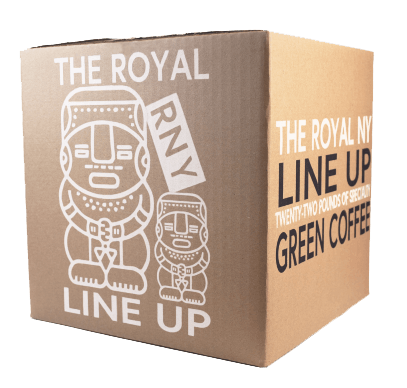No products in the cart.
Tea
White Tea 101: What is White Tea?
What is White Tea?
Do you know what white tea is? White tea is produced from young leaves and buds, and is only harvested for a few weeks each spring. White tea is also the oldest form of processing, likely starting in the late Han or early Tang dynasties. They pressed the minimally processed leaves into cakes until the Ming dynasty. The popular White Peony and Silver Needle teas of today did not become popular in China until the mid 19th century.
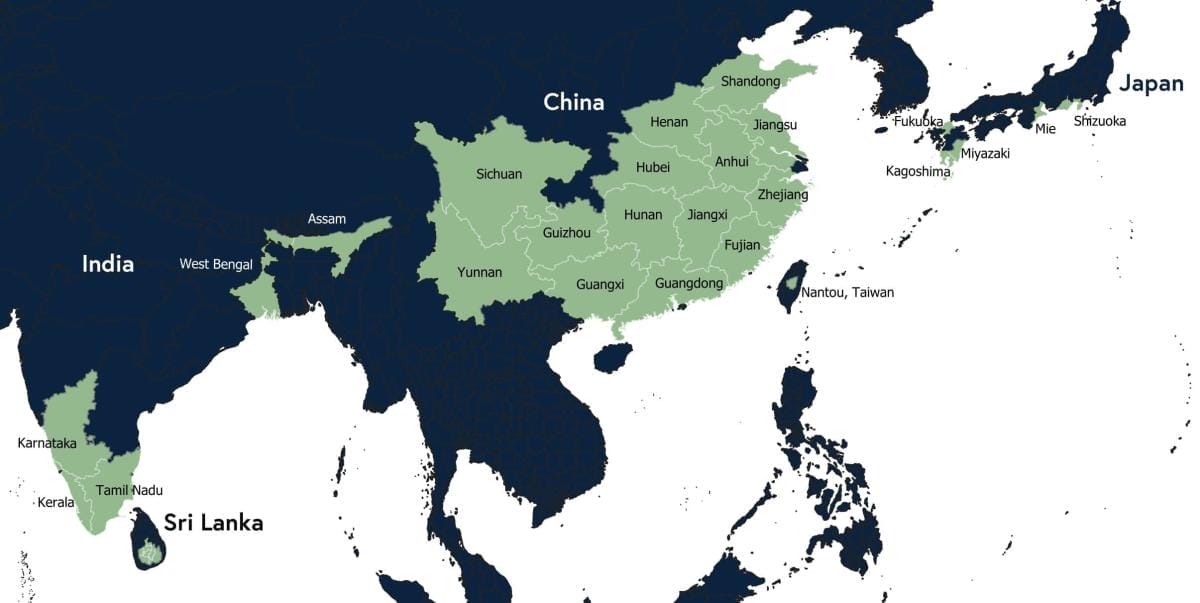
Most white tea is still produced in Fujian in Zhenghe, Jianyang, Songxi, and Fuding. White Peony is a white tea with leaves and buds. Silver Needle tea uses only the buds and Shou Mei uses only leaves. Da Bai is the traditional cultivar. Da Hao has been more recently developed and becoming increasingly common for its larger buds.
White Tea Processing
Most white tea will follow the same basic processing steps, with the primary differences occurring in plucking and sorting.
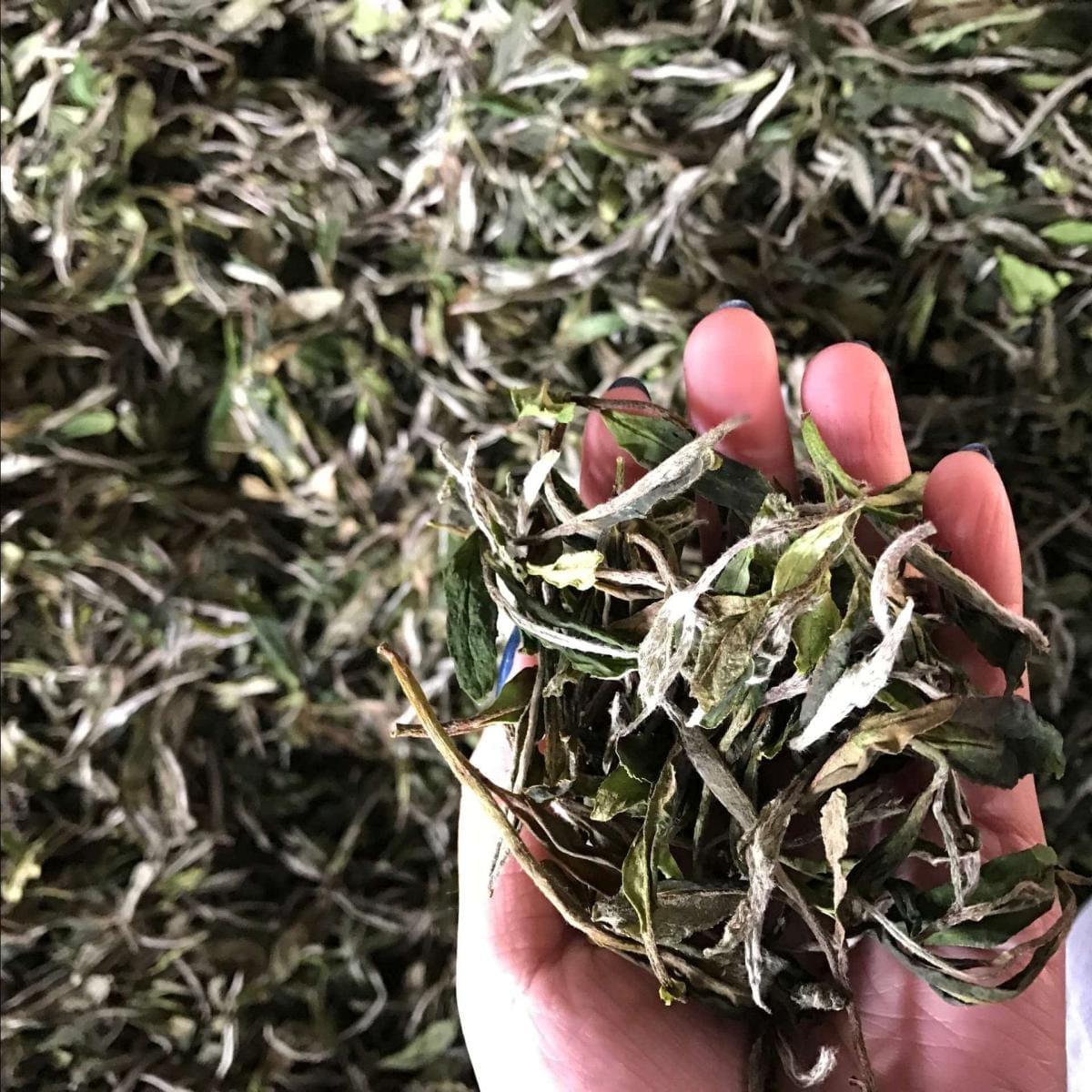
Plucking
Plucking or picking for white tea generally occurs in early spring. Tea farmers pluck the buds and top leaves in March or early April by hand. It’s important that they do this at this time while the leaves are still young and small.
Withering
Withering is the final drying step for white tea. It is generally done in the shade on bamboo mats or indoors with fans to increase air circulation. It is common practice for tea producers to use mechanical dryers for this step. The tea will dry for 12-24 hours and must be handled gently in order to avoid any bruising. Bruising would accelerate oxidation.
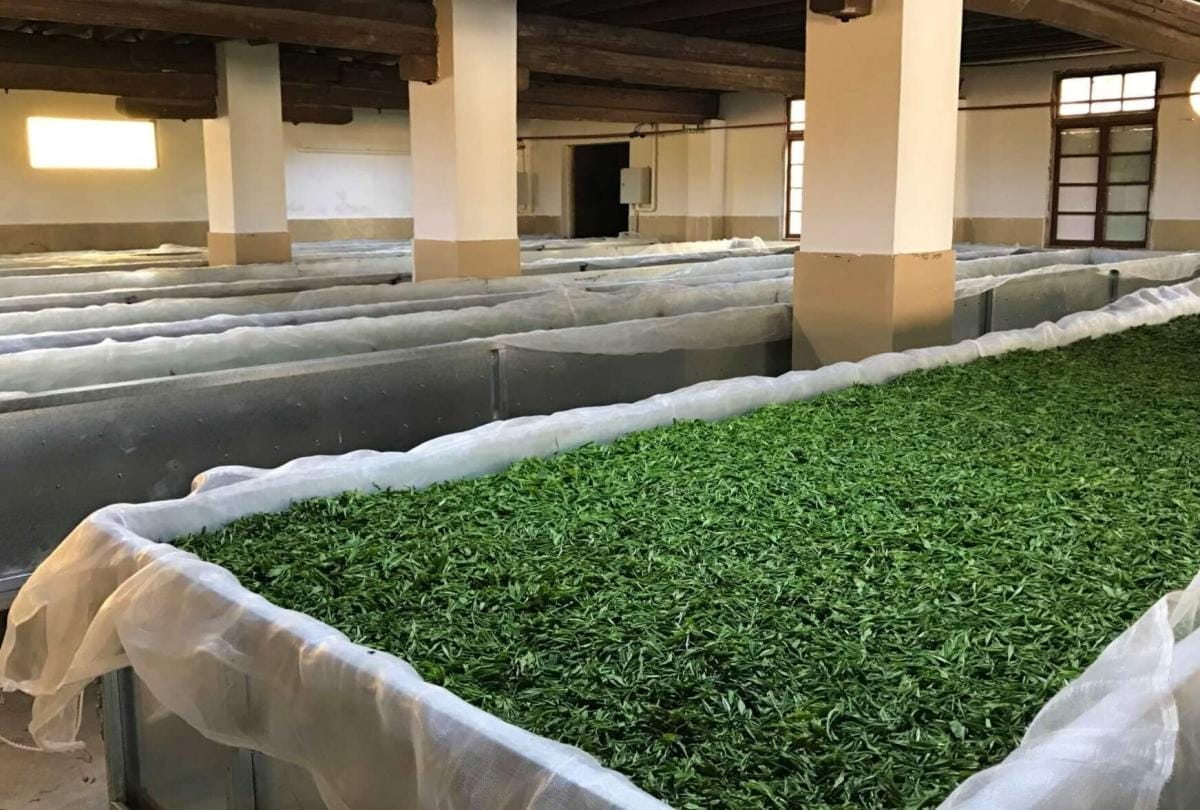
Sorting
Next, the dried white tea needs to be sorted to remove any broken leaves or twigs. Tea producers typically use screens for this step, however, they can also use machines. They then remove larger sticks by hand.
White Tea Brewing
White tea is less likely to become astringent compared to green tea, but it is more delicate than black teas. Using standard western brewing methods like tea infusers, bags, and pots, it should be brewed at 195°F-205°F for 3-5 minutes to achieve optimal extraction.
Grandpa Style
White tea can be brewed Grandpa Style. Brewing this way allows for the consumer to view the leaves and cup liquor more clearly. The tea is brewed in a large clear mug or cup, and as the tea is consumed, more water is added.
What you will need:
Large Glass Vessel
Kettle
0.25g/fl oz loose leaf tea
Water at 195°F – 205°F
1. Add tea to glass
2. Add hot water and stir
3. Drink tea and admire leaf grade and cup liquor
4. When the tea becomes too astringent or intense, add more water
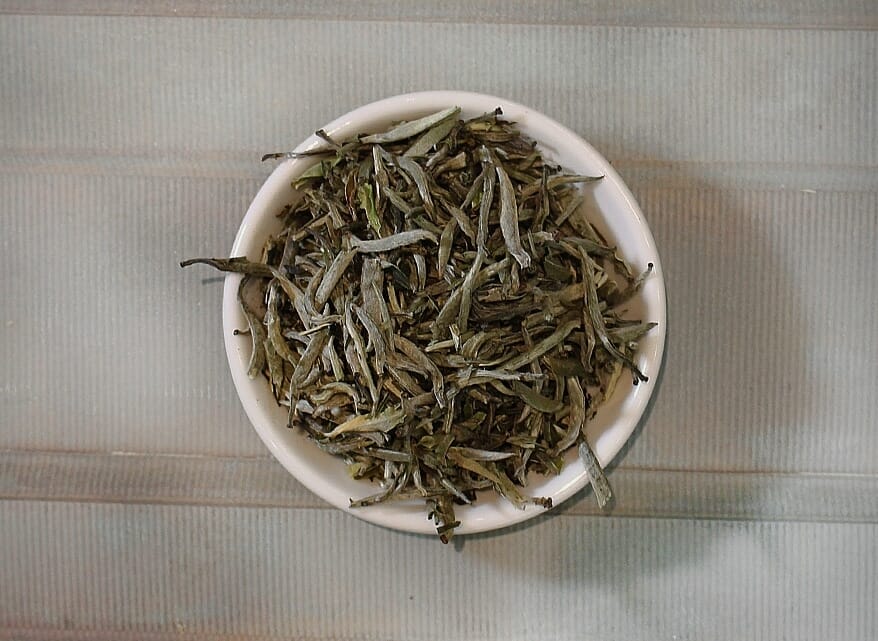
Gongfu Style
Brewing white tea Gongfu style can reveal complex and nuanced flavors that may be less clear brewing western style. This style uses a stronger brew ratio and several shorter steeps to reveal what flavors are extracted at varying parts of the brew. Gongfu is less popular for white tea, but it is becoming more so since it does not generally become astringent.
What you will need:
Gaiwan
Filtration device, optional
Small pitcher (Gong Dao Bei)
Tea tray (chachuan), optional
Scale
Kettle
Tea cups
1g/fl oz loose leaf tea
Water at 195°F – 205°F
1. Add tea to gaiwan
2. Rinse tea with hot water and immediately discard, this removes dust and preheats vessel
3. Add water to gaiwan until full, and steep for 30 seconds
4. Carefully shift the lid away from the gaiwan lip, creating a small space for water to pas. Pour the infusion through the filtration device into pitcher
5. Decant first steep evenly into separate cups until pitcher is empty
6. Repeat this process for 3-5 steeps, remarking on the change of flavor with each successive steep
Explore Royal New York’s White Tea!
Silver Needles
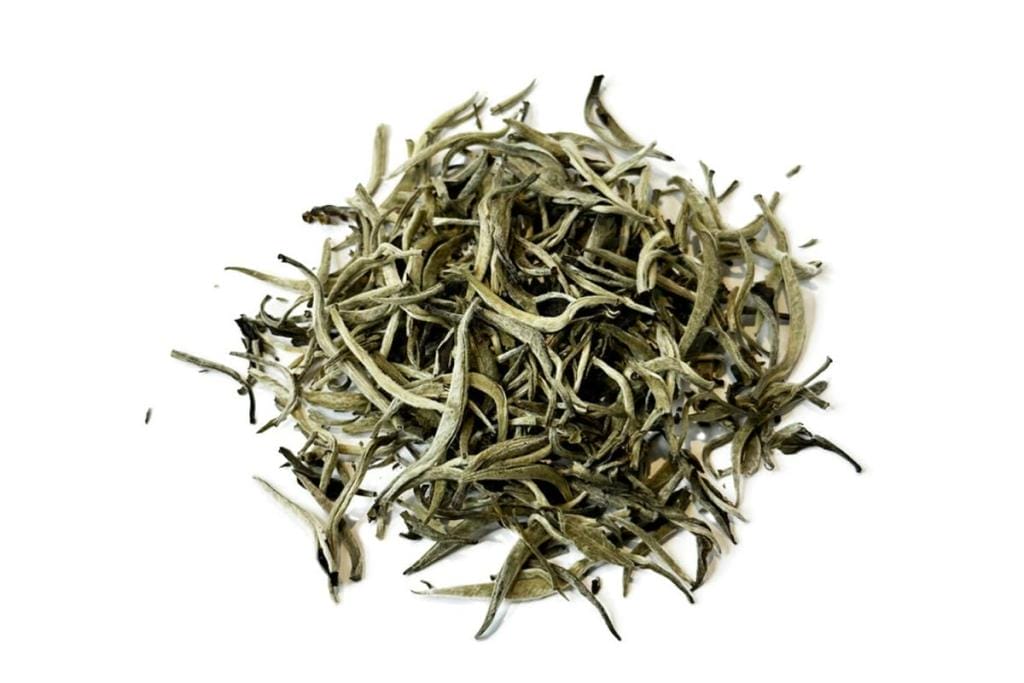
Harvested in the early spring, silver needles use only the fuzzy new buds of the tea plant.
Like many quality white teas, this lot comes from Fujian province, China. White tea originated in Fujian and is the least processed type of tea. This means that no additional rolling, oxidation, or heating is involved. It is only withered and air dried, resulting in a more delicate taste and aroma with cupping notes of hay, honey, and rose.
While white teas are traditionally from Fujian province, other terroirs have expanded to include this style. We also carry silver needles from Yunnan province, China. Due to differences in cultivar, climate, and topography, these silver needles are larger in size than their Fujian counterpart. In the cup, it has a lingering honey sweetness. Both are perfect options for an elevated tea menu!
Shop Royal New York’s Silver Needles
Organic White Peony (Bai Mu Dan)
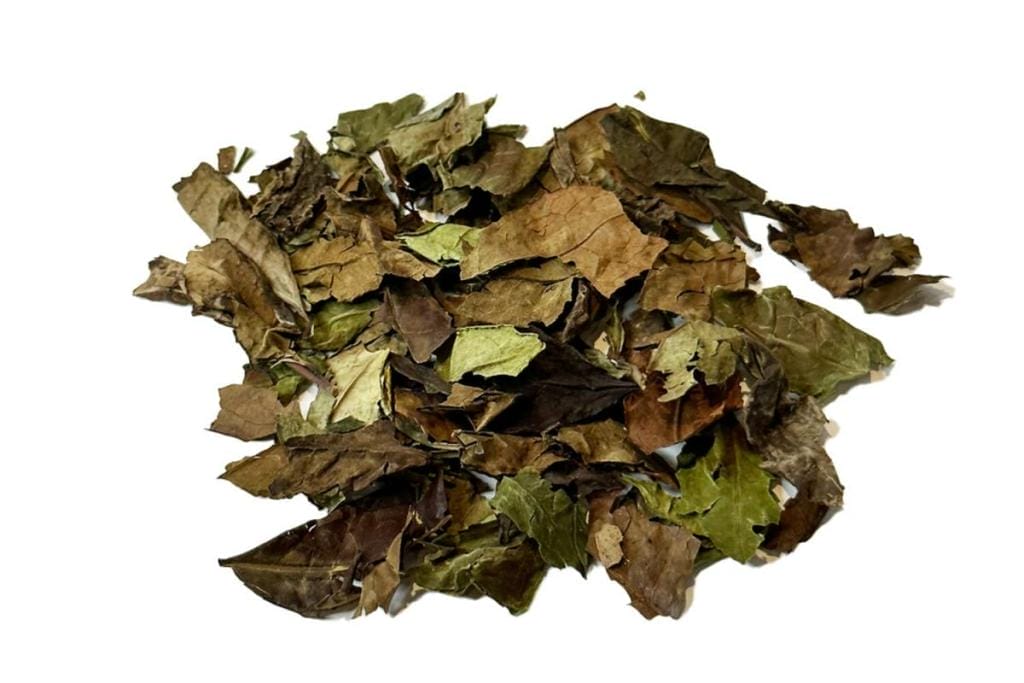
Another white tea from Fujian province, China, can also be spelled as Pai Mu Dan. It uses the same Da Bai cultivar as silver needle but includes the first two newest leaves along with the bud. It is also minimally processed, and carefully handled to avoid breaking the leaves so as little oxidation occurs as possible. In the cup, it had a medium body with notes of hay and honeysuckle and is a great white tea for newcomers that is relatively forgiving.
White peony lends itself well to blending. Its sweet and delicate notes pair well with a variety of other flavors. Our Papaya Pineapple Punch is a tangy and fruity summer tea that is a favorite for cold brewing. Sage Lavender White is an intriguing blend with a more herbaceous and floral character that surprises everyone who tries it. This is also an excellent tea for kombucha brewing!
Shop Royal New York’s Organic White Peony
